Guest Post!
June marks the 12th Anniversary of my blog: Art is Truth. Each year I try to do something to give back to the blog community and celebrate art and the connections it gives us. This year, I’ll be posting guest articles from readers each week. I hope you’ll enjoy reading about Mary’s workshop experience and viewing her art below!
Recently, I participated in an excellent online art workshop designed and led by Ruth Armitage called Land Lines. It was a “three-day exploration of personal mark making inspired by the landscape”. The workshop offered an opportunity to experiment with using a variety of marks and lines in new ways. For the duration of the workshop, I decided to focus on my backyard garden as the art topic.
I brought my own piece of landscape art of my backyard garden to the workshop, figuring that I could use it for comparative purposes.
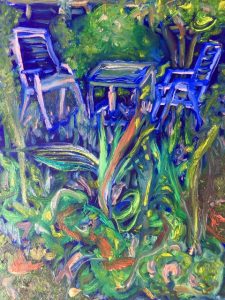
“Backyard” ©Mary Chamie, Oil
In the workshop, I tried to get a better grasp of Ruth’s techniques and perspective regarding the use of lines and marks in art, as she is a well-known artist of abstract paintings. When we received our workshop painting assignments, I chose to continue painting this same scene of my backyard garden, more abstractly, using as many aspects of Ruth’s workshop techniques as possible.
After a number of presentations and short tasks, Ruth asked us to paint, relatively quickly, several paintings using varied lines and marks. For her workshop assignment, I submitted three of the assigned paintings for review, all inspired by my garden backyard scene. The three pieces are shown below.
What Happened?
You may ask, “What happened?”
These are very different from the oil painting I carried in to the workshop depicting this same garden area. Let me explain.
The entire purpose of this exercise was to reach out into new territory. So I did.
Ruth’s focus on marks and lines at first sounded simple. But in fact, it was very challenging, and often left me wondering, what exactly is a land line? When is a mark or a line not a land line? Do lines or marks have multiple meanings in the same art project? Why do I need them at all? What if I just avoid marks and lines and work in smudges or color? What about texture? How do marks, lines, texture and color work together and when are they failures to communicate?
At times, this resulted in me being more puzzled than I was before I started. Taking a workshop can be a humbling experience. It is true of every excellent course or workshop that I have ever taken, that I leave knowing much less than when I arrived.
For her assignment, I started to describe the garden scene by using bold geometric lines using a large yellow Y shapes of sunlight to divide the chairs and table from plant life. I viewed these landscaping lines as compositional.
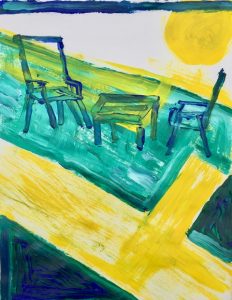 Then I decided to add marks and lines into the painting to depict plant life, over the larger composition of light streams that I had used to shape the painting. At this point in the workshop, I started to lean on lines and marks, along with color, to express how the garden varied.
Then I decided to add marks and lines into the painting to depict plant life, over the larger composition of light streams that I had used to shape the painting. At this point in the workshop, I started to lean on lines and marks, along with color, to express how the garden varied.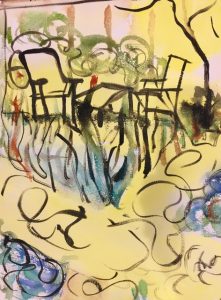
Switching Mediums
At this point, I took time out to paint a watercolor version of how the garden looked from a plant’s perspective which turned out whimsical and just plain fun. Without realizing it, I had also changed my perspective on what I was doing from the original oil landscape painting to imagining other perspectives.
This watercolor sketch that I did is painted from the perspective of looking at a plant almost from the position of the ground.
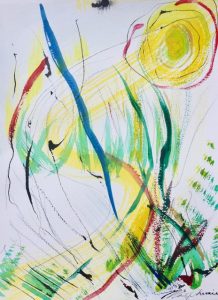
“Garden Plant” ©Mary Chamie, watercolor
After that, I made a more complicated sketch of trees, plants, table and chair. Not particularly happy with the end result, I decided to cut it up into pieces and see how it would look in a collage. Now that was brave! But it was also a reminder to not get too serious when trying to learn something new. From that experience, I decided that I was busy making lines. However, I needed more work on the meaning of lines.
Collage made from cut up pieces of my painting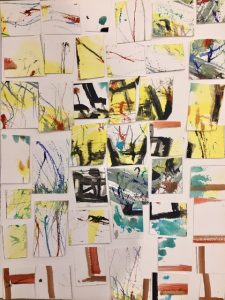
At that point, I moved to imagining my little garden as a sheltered place bordered by fences, and edged with wild flowers, tiny branches and bushes. I felt the presence of the streets surrounding our fenced in garden. I thought of the garden surrounded by city streets and at one time covered with spring snow. Hence the painting titled Winter Garden. (above)
I moved to viewing the garden from the perspective of our bungalow home, and considered the way in which the sky and the land related to early spring. See the painting, Garden Spring.
At that point, I decided to paint the garden as an oval sanctuary, or an icon.
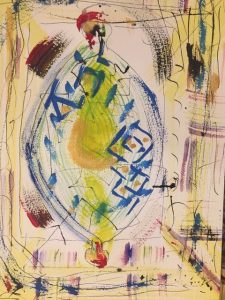
Icon
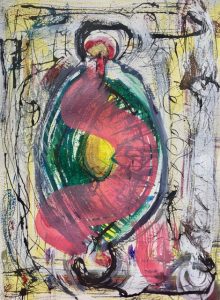
Pink Layered over Icon
Frustrated, I brushed in a larger set of compositional lines by adding a large pink shape over the garden. It was a personal statement on my part, saying that I needed a more stable place to describe the inner sanctuary aspect of my garden.
Then, I decided, over the same painting, to bring color, texture and line into the iconic inner sanctuary of the garden using the color blue and adding marks to show the garden’s intricacy. The painting ended up being simple in line, highly textured, using acrylic, water color and ink. See the painting, Garden Sanctuary.
My conclusion is that there are many more ways to depict a little backyard garden, and many more paintings to go.
It turned out that Ruth’s assignment to paint three or four paintings simultaneously while considering lines, marks and landscapes was very helpful, reducing the need for perfection and enhancing the need for experimentation.
Art, for me, is a continual process of learning, sketching, and imagining new ways to relate to my surroundings. Having painted a place, I feel much more intimately attached and familiar with it. Seeing it through multiple perspectives via this workshop has only strengthened my attachment to it. Added to this enjoyable process of painting my backyard garden, was the additional pleasure of learning new approaches and techniques of abstract art while doing it.
With respect to the workshop being conducted via the internet, I am grateful that Ruth and other artists continue to go forward with art workshops using the internet while under the current conditions of a pandemic where we are all under stay at home measures and social distancing. Under these new conditions, I found certain aspects of an online workshop very enjoyable. First, there was no commute. Second, I could walk away from the workshop and come back and continue at my own pace without interrupting anyone else. Third, there was time for thought. I was less hurried. I was also less self-conscious because if I did’t like what I was doing, I could pitch it and do it over, sight unseen.
There are some obvious disadvantages, as well to an online workshop. First, it required a quiet place in my home, without distraction, so as to not be interrupted by our regular activities of daily living. Second, I lost the opportunity to meet new artists. Third, we used text messages to speak with each other, thus losing the spontaneity of facial expressions, gestures and voice.
A Zoom meeting at the end helpfully brought us together for review of our work and allowed a more interactive discussion of each artist’s work with the instructor, while allowing other artists to observe.
Trying to use other artist’s perspective and techniques may feel awkward at first, but it leads to new understandings and broader perspectives on what is possible. I will be drawing and sketching for months to come, and no doubt will refer back to this workshop on lines, marks and landscaping, many times over.
Coincidentally, I got a Mother’s Day package in the mail a few days ago from my children and when I opened it up, it was a beautiful book, The Human Planet, Earth at the Dawn of the Anthropocene. The book highlights over 30 years of aerial photography across seven continents, completed by George Steinmetz, exploring the human imprint on climate and the natural world, with explanatory text provided by Andrew Revkin. The arrival of this book could not have been more timely. The landscape is both photographically real and artistically abstract, offering many opportunities for imagining new ways to paint landscapes from an aerial point of view, with lines.”
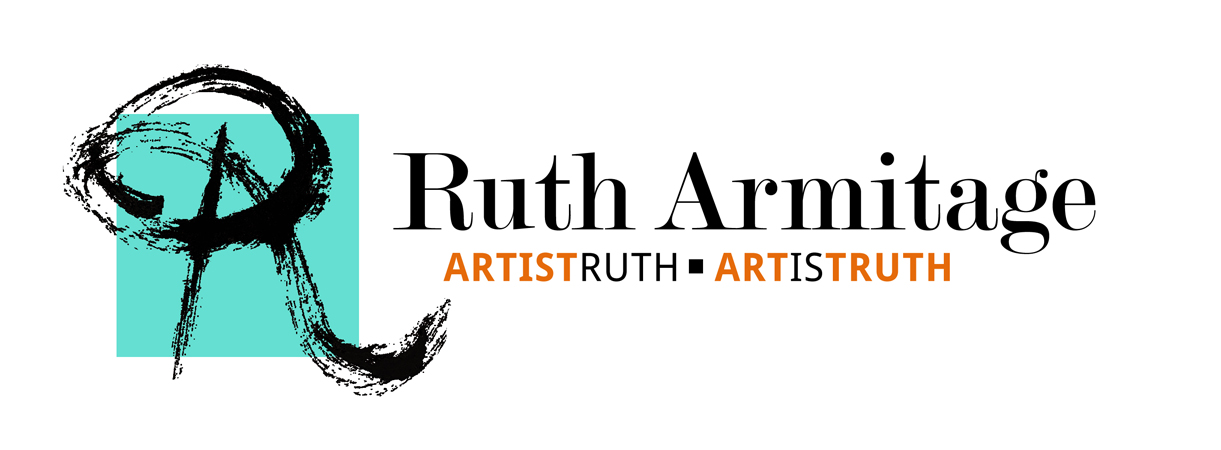
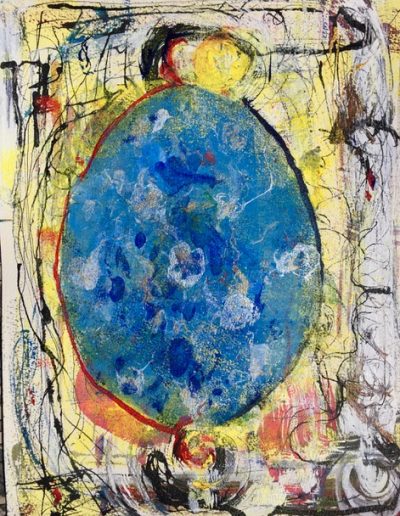
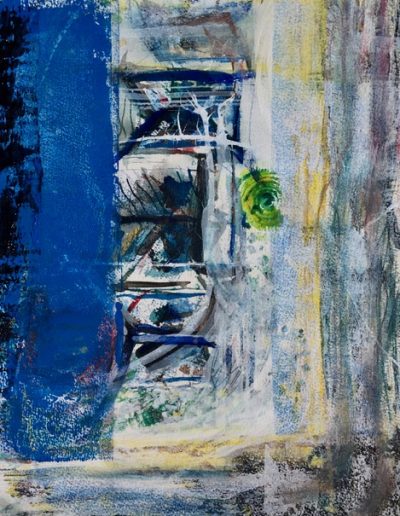
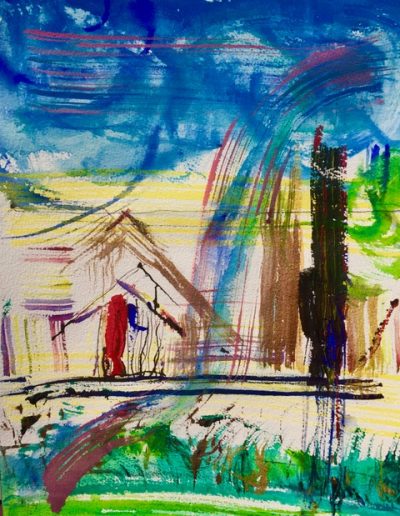
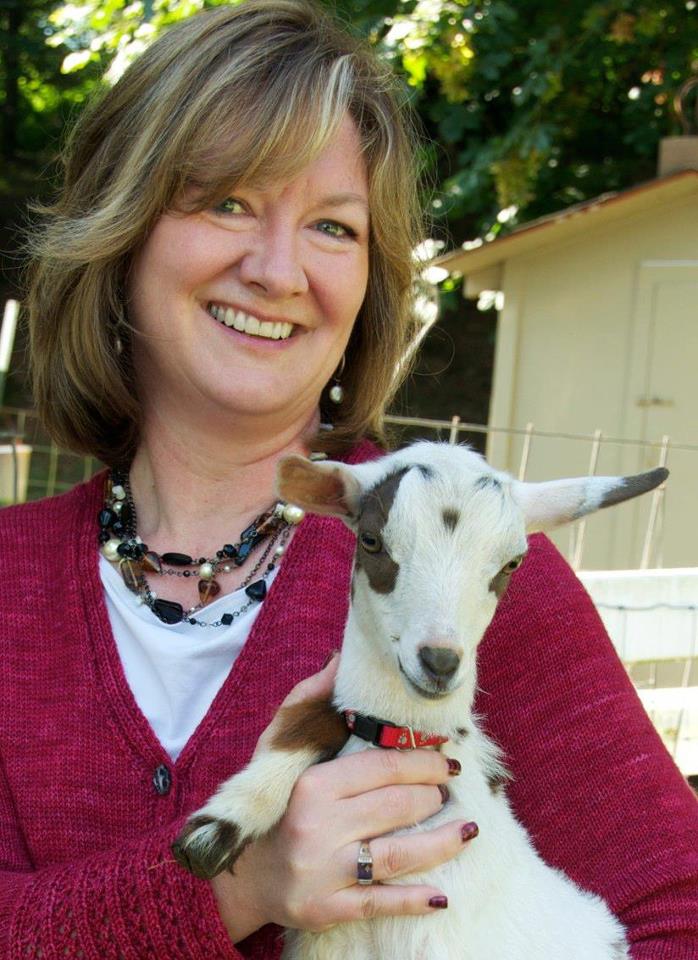
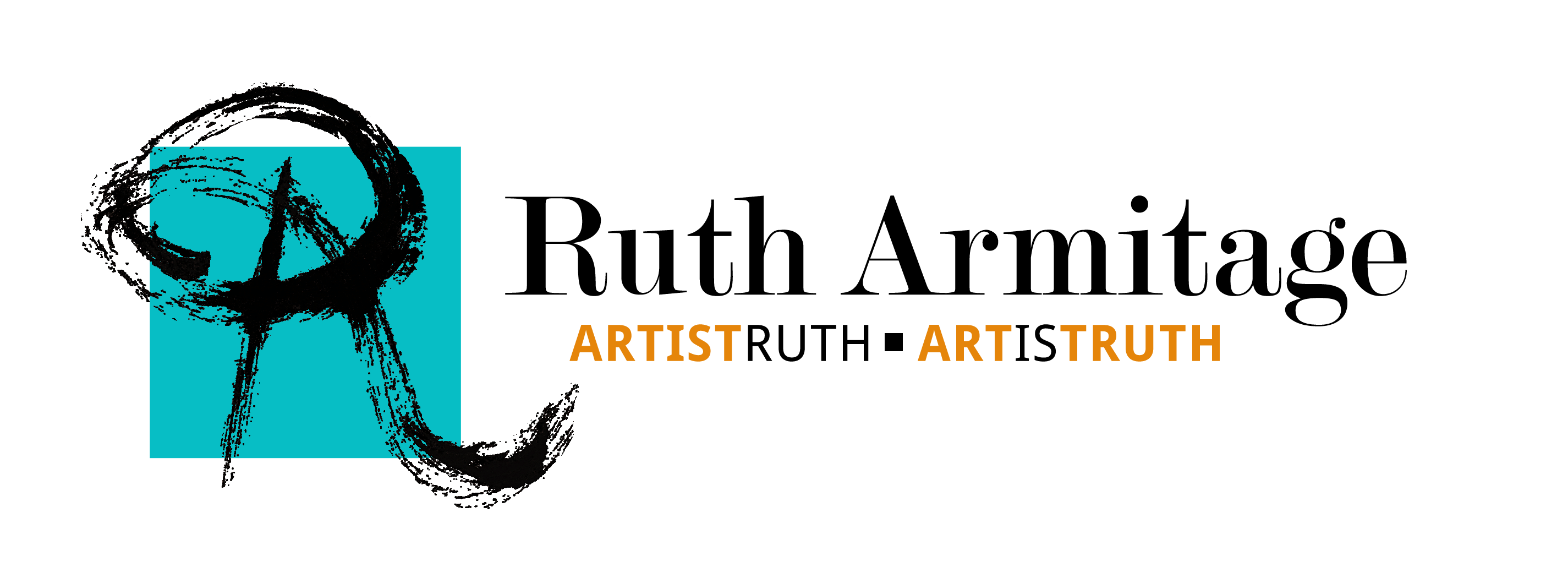
Thank you, Ruth, for providing such a great learning environment in your workshops.
Thanks for sharing your experience!
What a articulate post by Mary Chamie about Ruth’s “Land Lines” online course. . Mary’s narrative of her journey to paint her “little backyard garden” opened a garden of challenges which Mary enjoyed and practiced. I love adventure and Mary’s experience with “Land Lines” prompts me to take more risks in my work. Her art process diary prompt me to pay more attention to my own painting process. Thank you both for sharing Mary’s art diary.
Thank you Mary K! I was impressed with Mary C.’s efforts too 🙂
Thank you Mary K for your kind words. I am glad that you found the blog useful.